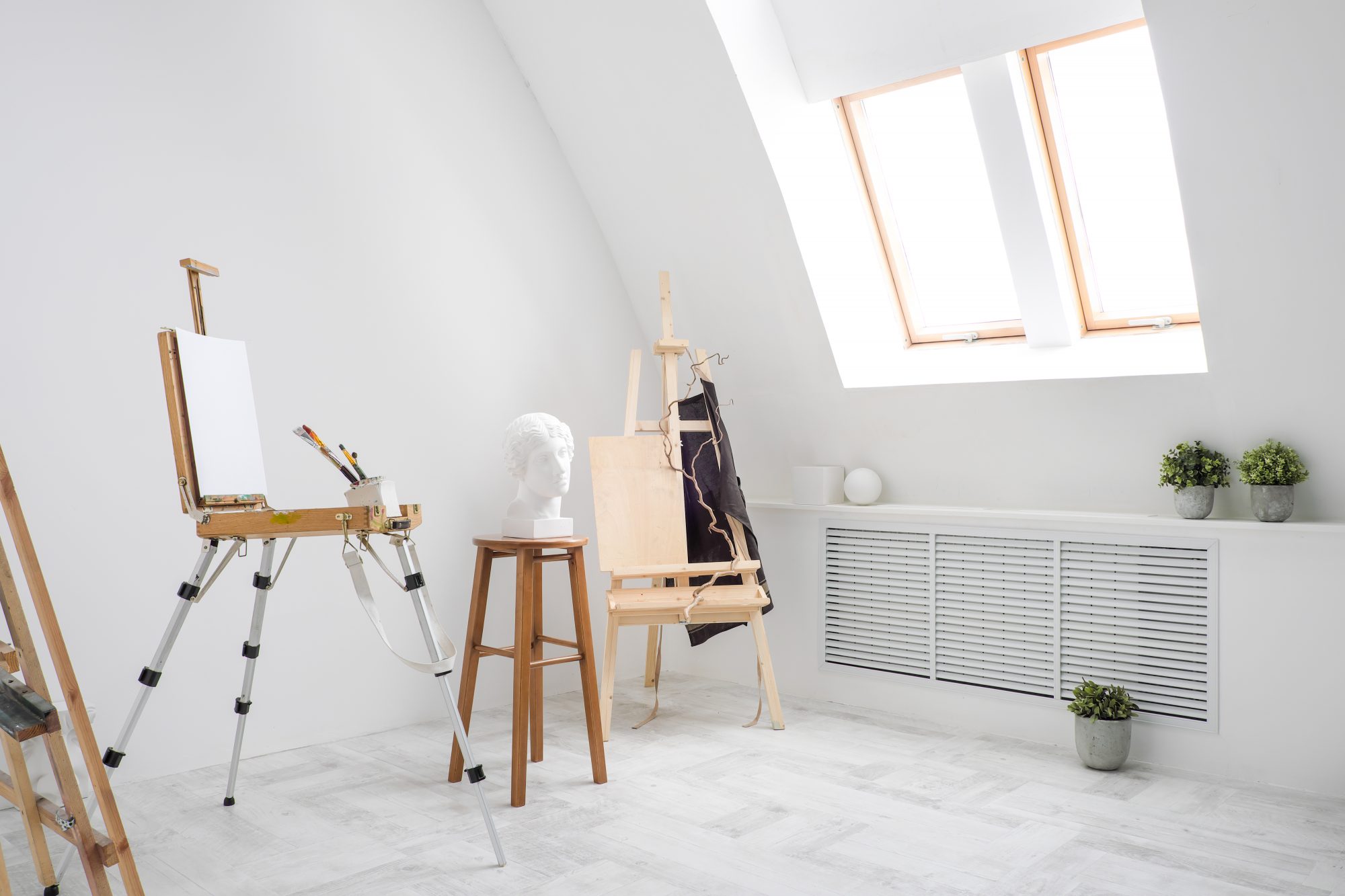In this guide, we will explore the essential steps and considerations for creating a professional, functional art studio within your home. This discussion is tailored for home decorators and DIY hobbyists who seek expert advice on setting up an art studio or craft space. We offer practical design and organization tips to turn any space—whether a spare bedroom, attic, or outdoor shed—into a creative haven.
Identifying a Space for Your Art Studio
You do not require a vast area to establish a functional art studio. Whether you choose an extra bedroom or an attic, these design ideas can transform underutilized spaces into an admirable and efficient studio.
Transforming a Dining Room
If you seldom use your dining room, consider converting it into an art studio. The space intended for a dining table provides ample room for shelving, a large drawing table, and storage for ongoing projects.
Converting a Bedroom
An extra bedroom offers the advantage of privacy, making it ideal for a DIY art space. Ensure adequate ventilation by keeping windows open, especially when working with paints or materials with strong odors.
Utilizing Extra Cupboards
Transform an unused wardrobe into a compact art studio. Store clothes, shoes, and accessories in under-bed compartments to free up space for your art activities. A small, foldable table or easel can fit comfortably in this setup.
Creating a Studio in Unique Spaces
Outdoor Shed
An outdoor shed is perfect for artists working on large projects or using equipment like pottery wheels. This secluded space minimizes distractions and provides ample room for creative endeavors.
Garage
Utilize the garage to build an art workspace. The garage door offers natural light and ventilation, while cement floors are ideal for handling spills. Equip the space with a whiteboard, drafting table, or workbench to create an optimal studio environment.
Under the Stairs
One often-overlooked area for an art studio is under the stairs. Install wall-mounted shelves or tripods to conserve floor space and add proper lighting if the stairs are in the basement. A small table can be included for digital artwork.
Setting Up in the Attic
An attic art studio prevents clutter from spilling into living areas and offers more project space. Ensure proper heating and cooling to protect your work from damage.
Guide to Establishing an Art Studio in Your Residence
Efficient storage is crucial for any home art studio. Consider furniture with built-in storage, such as desks with drawers, bookshelves, and folding tables. Many storage solutions can be DIY projects.
Choosing Your Studio Table
A suitable desk or table is vital, offering sufficient space to draw, sketch, or design and store tools within easy reach. For small spaces, a collapsible wall table is an excellent solution.
Organizing Supplies
- Curtains: Use curtains to hide supplies stored under desks or tables, keeping the workspace tidy.
- Old Card Catalogs: Repurpose old furniture for affordable and charming storage solutions.
- Grids: Lightweight and versatile, grids can store various art supplies or serve as drying racks for pottery.
- Plastic Boxes: Use labeled plastic boxes to keep supplies organized and easily accessible.
- Vertical Storage: Utilize vertical space with floating or corner shelves for sketchbooks and wire baskets for paints and writing instruments.
- Mason Jars: Store small items like pencils and brushes in jars or tins, which can be wall-mounted for convenience.
Additional Tips
- Canvas Storage: Keep canvases organized and damage-free with DIY drying racks.
- Clothespins for Art Display: Hang art with strong wire and clips to save desk space and easily swap projects.
- Supply Carts: Use storage carts to keep materials organized and portable, creating a flexible workspace.
By following these steps and utilizing smart storage solutions, you can create an efficient and inspiring art studio in your home. Whether you are a home decorator or a DIY hobbyist, this guide provides the insights needed to transform any space into a creative sanctuary.



